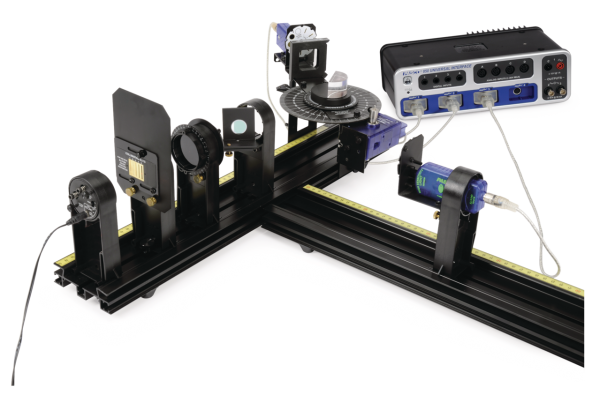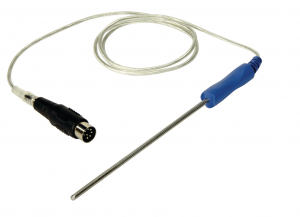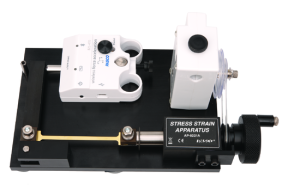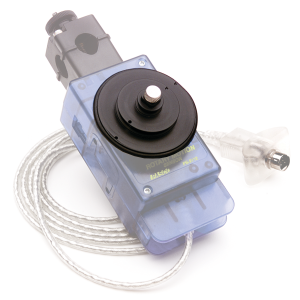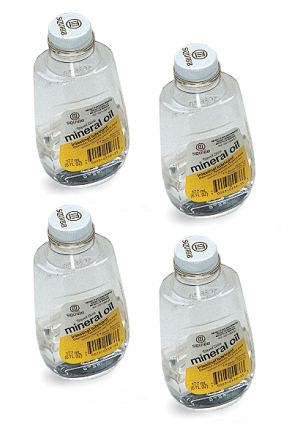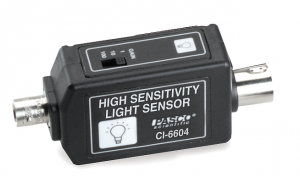Product Details
Brewster’s Angle Experiment
The complete solution for measuring the value of Brewster’s angle when light is partially polarized when reflected off a nonconducting surface. This complete solution is designed for use with PASCO Capstone Software.
Description
In this experiment, light is partially polarized when reflected off a nonconducting surface and Brewster’s Angle is measured. Light from a diode laser is reflected off the flat side of an acrylic semicircular lens. The reflected light passes through a polarizer and is detected by a Light Sensor. The angle of reflection is measured by a Rotary Motion Sensor mounted on the Spectrophotometer table. The intensity of the reflected polarized light vs. reflected angle is graphed to determine the angle at which the light intensity is a minimum. This is Brewster’s Angle, which is used to calculate the index of refraction of acrylic.
PASCO Advantage: It is possible to determine the difference in index of refraction for different wavelengths of light. This is accomplished by using a beam-splitter and a second light sensor to compensate for the variation of the laser intensity. The reflected beam intensity is normalized by the intensity of the laser. This modification to the experiment was suggested by Cristian Bahrim and Wei-Tai Hsu in the American Journal of Physics article: “Precise Measurement of the Refractive Indices for Dielectrics Using an Improved Brewster Angle Method”, Vol. 77, page 337 (2009).
Developed using original ideas from P.J. Ouseph, Professor of Physics at University of Louisville, KY: “Polarization of Light by Reflection and the Brewster Angle” by P.J. Ouseph, Kevin Driver, and John Conklin, Am. J. Phys. 69, 1166 (2001).
https://www.pasco.com/products/complete-experiments/waves-and-optics/ex-5544#specs-panel

